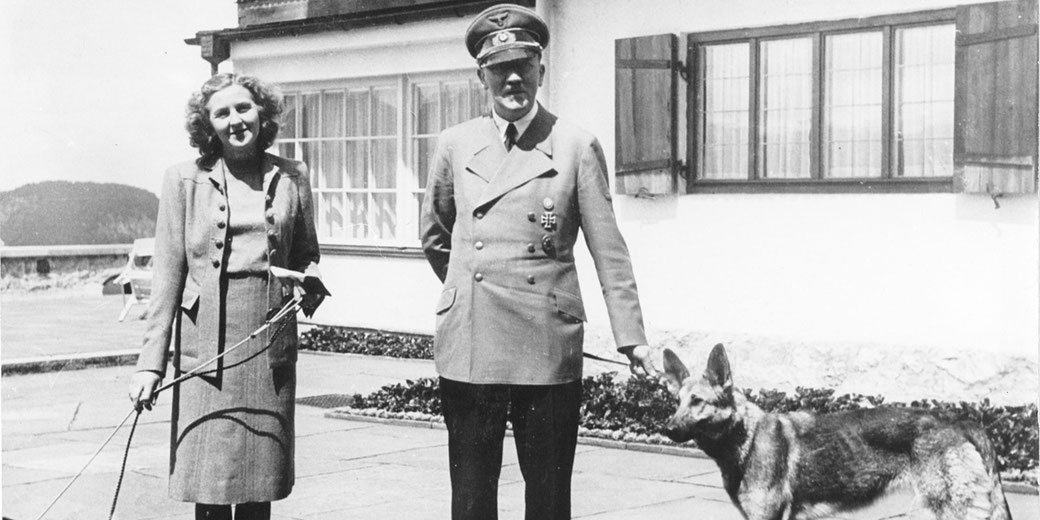The tragic life of Eva Braun: Hitler’s secret mistress

Eva Braun's life remains one of the most tragic and enigmatic tales from the era of Nazi Germany. Her life changed forever when she met Adolf Hitler who led her into a life of secrecy and despair.
By 1932, Eva had become a constant presence in Hitler's inner circle, yet she remained largely unknown to the public. As she grew closer to Hitler, her existence became increasingly isolated and controlled.
Throughout her life, Eva struggled with her confined role and the lack of a normal relationship.
Her life before Hitler
Eva Braun was born on February 6, 1912, in Munich, Germany. Her father, Friedrich Braun, was a school teacher, and her mother, Franziska Kronberger, was a seamstress.
Eva grew up in a modest household with her two sisters, Ilse and Margarete. By all accounts, her childhood was ordinary, filled with school, family activities, and a close circle of friends.
At the age of 17, she attended the Catholic Institute of the English Sisters in Simbach am Inn, where she received a standard education for girls of her social class.
In 1929, Eva began working as an assistant and salesclerk for Heinrich Hoffmann, Adolf Hitler’s official photographer.

Meeting Adolf Hitler
Eva Braun first encountered Adolf Hitler in October 1929 at Heinrich Hoffmann's photography studio. Hoffmann, who employed Eva as an assistant, introduced them casually.
At that moment, Eva was unaware of Hitler's growing political influence. In the months that followed, she saw him frequently as he visited Hoffmann's studio for photographs.
Hitler was captivated by her youthful charm and began to take a personal interest in her.
By 1931, their relationship had deepened, though it remained discreet. Hitler, 23 years her senior, was already the leader of the National Socialist German Workers' Party (NSDAP).
With a significant public profile, he kept their association out of the public eye. In private, he showered Eva with gifts and attention.
Eva, enthralled by his charisma and power, found herself increasingly drawn to him. To her family and friends, she remained reticent about the true nature of their bond.
Their meetings often took place at Hoffmann's studio or at Hitler's private residence. Hitler’s control over Eva grew, demanding her time and presence whenever he wished.
In March 1932, after the tragic death of his niece Geli Raubal, Hitler became even more dependent on Eva for emotional support.
Her dark relationship with Hitler
As Hitler’s companion, Eva Braun led a life of seclusion and control. She lived in the shadow of one of history’s most infamous figures, rarely stepping into the public eye.
Hitler ensured she remained out of the political and social spotlight. To the outside world, Eva was virtually invisible, a ghostly presence in Hitler’s private life.
Within the confines of their relationship, she endured a life of waiting and uncertainty.
Hitler’s obsession with secrecy meant that Eva's existence was confined to his residences, such as the Berghof in the Bavarian Alps.
At the Berghof, she occupied herself with mundane activities like photography and sports. However, her isolation was profound.
For years, she waited for moments of attention from Hitler, who was often preoccupied with his political ambitions.
During these times, Eva’s longing for a normal life grew. Although surrounded by luxury, she lacked emotional fulfillment.
Eva’s personal struggles
Eva Braun found herself in a world where her existence depended entirely on Adolf Hitler's whims. She sought ways to escape her anguish, leading to her first suicide attempt in August 1932.
This act was a desperate cry for attention and a reflection of her inner despair.
In May 1935, Eva attempted suicide again, ingesting a large amount of sleeping pills. By this time, her mental health had deteriorated significantly.
Her diaries revealed a troubled mind, tormented by feelings of insignificance. Throughout these years, she clung to the hope of a more fulfilling relationship with Hitler.
Despite his increasing dependence on her for emotional support, he remained distant and absorbed in his political duties.
This cycle of hope and disappointment took a heavy toll on her well-being.
Marriage and final days
In the final days of the Third Reich, Eva Braun made a significant decision. She traveled to Berlin in early April 1945, determined to be with Adolf Hitler.
As the Allies closed in, the atmosphere in the Führerbunker grew increasingly desperate. On April 29, 1945, in a brief and solemn ceremony, Eva married Hitler.
The next day, April 30, 1945, Hitler and Eva made the fateful decision to end their lives. In the bunker, surrounded by the crumbling remains of their once-powerful regime, they took cyanide.
Hitler also shot himself to ensure his death. Their bodies were carried to the garden above the bunker, where they were doused with petrol and set on fire.
This act aimed to prevent their corpses from falling into enemy hands.
How have historians understood Eva Braun?
Eva Braun's legacy remains a contentious and complex topic. Many viewed her as a tragic figure, caught in the orbit of a monstrous regime.
To some, she appeared to be a victim of circumstances, while others questioned her complicity in the horrors of the Third Reich.
Initially, many dismissed her as a naive and apolitical woman. However, recent studies have painted a more nuanced picture.
Some historians argue that her close proximity to Hitler suggests a deeper involvement in his affairs. Yet, there is little evidence to prove she held any significant political influence.
Eva Braun's legacy serves as a reminder of the personal tragedies intertwined with historical events.
What do you need help with?
Download ready-to-use digital learning resources
Copyright © History Skills 2014-2025.
Contact via email
With the exception of links to external sites, some historical sources and extracts from specific publications, all content on this website is copyrighted by History Skills. This content may not be copied, republished or redistributed without written permission from the website creator. Please use the Contact page to obtain relevant permission.





